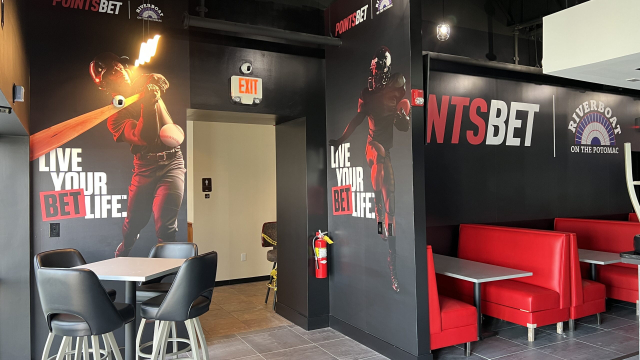Cold calling remains a powerful tool in the sales arsenal. Despite the rise of digital communication, the personal touch of a phone call can create immediate connections. This guide explores the essentials of cold calling, offering strategies to enhance your sales success.
The Importance of Cold Calling in Sales
Cold calling opens doors to new business opportunities. It allows salespeople to reach potential clients who may not be accessible through other channels. Direct conversation helps build trust and rapport, which are crucial for closing deals. By mastering cold calling, sales teams can significantly increase their conversion rates and expand their customer base.
Preparing for a Cold Call
Researching Your Prospects
Effective cold calling starts with thorough research. Understand your prospects’ business needs, challenges, and industry trends. Use tools like LinkedIn and company websites to gather relevant information. This preparation helps tailor your approach, making your pitch more relevant and engaging.
Crafting a Compelling Script
A well-crafted script provides a roadmap for your call. Start with a strong opening that grabs attention. Clearly state the purpose of your call and how you can solve a problem or add value. Include key points to cover and be prepared to deviate from the script to keep the conversation natural.
Making the Cold Call
Opening the Conversation
The first few seconds of a call are crucial. Introduce yourself and your company succinctly. Show respect for the prospect’s time and briefly explain why you’re calling. An engaging opening sets a positive tone for the rest of the conversation.
Engaging the Prospect
Ask open-ended questions to understand the prospect’s needs and pain points. Listen actively and respond thoughtfully. Tailor your responses to align with their interests. Building a two-way dialogue makes the prospect feel heard and valued, increasing the chances of a positive outcome.
Handling Objections
Objections are a natural part of cold calling. Prepare for common objections and practice your responses. Stay calm and empathetic, acknowledging the prospect’s concerns. Offer clear, concise solutions that address their objections. Effective handling of objections can turn a hesitant prospect into a willing client.
Post-Call Strategies
Following Up
Follow-up is crucial for maintaining momentum. Send a thank-you email reiterating key points from the call and providing additional information. Schedule future calls or meetings to keep the conversation going. Consistent follow-up demonstrates your commitment and keeps you top of mind.
Analyzing Call Performance
Review your calls to identify what worked and what didn’t. Analyze metrics like call duration, conversion rates, and the number of objections handled. Use this data to refine your approach and improve future calls. Continuous improvement is key to mastering cold calling.
Common Mistakes to Avoid in Cold Calling
Avoid sounding robotic or overly scripted. Personalize each call to the prospect’s unique situation. Don’t neglect follow-up; it’s a critical component of the sales process. Stay patient and persistent, as success often requires multiple touchpoints. By steering clear of these common pitfalls, you can enhance your cold calling effectiveness and achieve better results.
Building Confidence for
Confidence is key in cold calling. Prospects can sense hesitation and uncertainty. To build confidence, practice regularly. Role-playing with colleagues can help simulate real scenarios. Visualizing successful calls can also boost your self-assurance. Remember, confidence grows with experience. Each call is a step towards becoming more comfortable and proficient in your approach.
Utilizing Technology in Cold Calling
Technology can significantly enhance your cold calling efforts. CRM systems help manage contact information and track interactions. Auto-dialers increase efficiency by reducing manual dialing time. Call recording tools allow for performance review and improvement. Leveraging these technologies streamlines the process and helps you focus more on engaging with prospects effectively.
The Role of Persistence in Cold Calling
Persistence is vital in cold calling. Many successful sales are made after multiple follow-ups. Don’t get discouraged by initial rejections. Keep reaching out and refining your approach based on feedback and experiences. Persistence shows your dedication and can eventually lead to positive outcomes. Remember, every “no” brings you closer to a “yes.”
Training and Development for Cold Calling Success
Ongoing training and development are essential for cold calling success. Regular workshops and training sessions can provide new techniques and refresh existing skills. Encourage feedback and learning from peers. Staying updated with industry trends and continuously honing your skills ensures you remain effective and competitive in your cold calling efforts.
Measuring Cold Calling Success
To measure the success of your cold calling efforts, track key performance indicators (KPIs) such as the number of calls made, the number of appointments set, conversion rates, and the average call duration. Analyzing these metrics helps identify areas for improvement and highlights what strategies are working best. Consistently monitoring your performance ensures you stay on track and make data-driven decisions.
Personalizing Your Cold Call Approach
Personalization is crucial in cold calling. Address the prospect by name and reference specific details about their business or industry. Tailor your pitch to address their unique needs and pain points. Personalized calls show that you’ve done your homework and are genuinely interested in solving their problems, which can significantly increase your chances of success.
Creating a Cold Calling Schedule
A structured cold calling schedule helps maintain consistency and productivity. Allocate specific times of the day for cold calling, preferably during hours when prospects are most likely to be available. Plan breaks to avoid burnout and keep your energy levels high. Consistent scheduling ensures you dedicate enough time to reach out to a significant number of prospects regularly.
Integrating Cold Calling with Other Sales Strategies
Cold calling should be part of a broader sales strategy. Combine it with email marketing, social media outreach, and networking events to create a multi-channel approach. This integration ensures you reach prospects through various touchpoints, increasing the likelihood of engagement. Each channel can support the others, making your overall sales efforts more robust and effective.
Legal and Ethical Considerations in Cold Calling
Understanding and adhering to legal and ethical guidelines in cold calling is essential. Familiarize yourself with regulations such as the Do Not Call (DNC) list and data protection laws. Always respect the prospect’s time and privacy. Ethical cold calling builds trust and maintains your company’s reputation, which is crucial for long-term success.
Handling Rejection in Cold Calling
Rejection is a common aspect of cold calling. It’s important not to take it personally. Use rejections as learning opportunities to refine your approach. Stay positive and focused on your goals. Develop resilience by reminding yourself that each rejection brings you closer to a successful call. Maintaining a positive mindset helps you stay motivated and persistent.
Using Cold Calling in Different Industries
Cold calling strategies can vary by industry. In B2B sales, calls might focus on discussing specific business solutions and industry trends. In B2C sales, calls could be more product-focused and personal. Understanding the nuances of your industry helps tailor your approach to meet the specific needs and expectations of your prospects, increasing the effectiveness of your cold calls.
The Future of Cold Calling
The future of cold calling is evolving with advancements in technology. AI and machine learning are starting to play significant roles, providing deeper insights into prospect behavior and improving call scripts. Despite these changes, the fundamental principles of building relationships and understanding customer needs remain constant. Staying adaptable and embracing new tools will ensure cold calling remains a valuable sales strategy.



